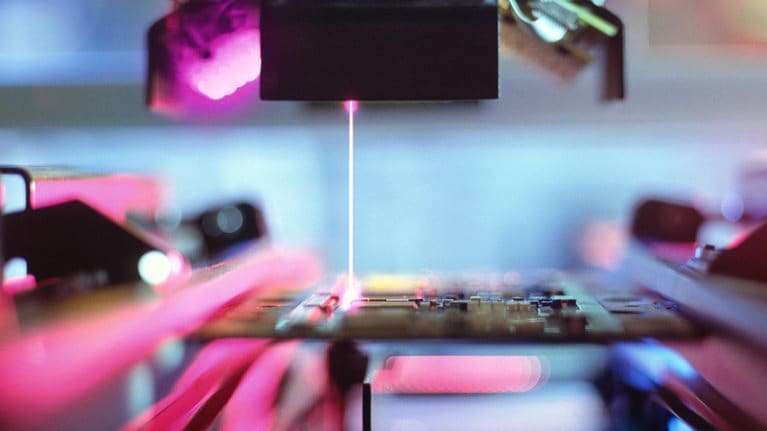Many companies are embedding sensors in product components and equipment to streamline manufacturing processes, improve yields, and create new business opportunities.1 The digitization of manufacturing, sometimes referred to as Industry 4.0., has begun in earnest, and Mattias Ulbrich, CIO of Audi, has witnessed the shift firsthand. “Years of experience in the automotive industry have made it clear to me that interdisciplinary collaboration—with business and IT working together—will be critical in this time of digital transformation. IT has a central role to play as change partner,” he says. In this interview conducted by McKinsey’s Gérard Richter and Dominik Wee, Ulbrich shares his perspectives on digitization in the automotive industry and how he and his team are adapting to the change.
McKinsey: How are emerging digital technologies, such as the Internet of Things and machine learning, changing the automotive industry?
Mattias Ulbrich: The use of modern technologies holds a lot of potential for the automotive industry broadly and for Audi in particular. Automakers have very diverse process and product requirements, so there are lots of areas where these new technologies could be applied. Already, many companies are using sensor technology to connect various controls inside and outside today’s cars and to simplify user interfaces. We are incorporating more robotic assistance and augmented-reality technology at production sites. We expect that trends like machine learning and data analytics will have significant impact for us. For instance, we can use data-driven insights to inform autonomous-driving initiatives or to optimize warehouse logistics. It would be a mistake to shut ourselves off to new trends or to reject them out of hand. The challenge, however, is to transform different technologies so they meet our current and future requirements. We have to create a sustainable business case for these newer technologies. We have to buy or build the appropriate resources and expertise. To that end, we have significantly grown our team over the past few years and continue to do so. I think Audi has always been considered to be at the forefront of technology, and I think this public perception has helped us become a desirable destination for tech talent.
McKinsey: How has the IT department’s role changed with the advent of digital manufacturing?
Mattias Ulbrich: I think the prevailing wisdom that “IT follows business” no longer fits in all cases. In the past, IT organizations would use the classical waterfall model to execute certain company processes.2 But the advent of digital means we can use new approaches and technologies to establish new business cases, models, and services more quickly. So we believe the job of IT is to proactively support the “innovative transformation” of the company as a whole. That’s what IT stands for now. At Audi, the IT group works closely with business departments like production, sales, and engineering to support transformation initiatives. We are less request driven and more collaboration driven. Since IT has an end-to-end view of critical company processes, our department can be a central partner in or coordinator of change.
Would you like to learn more about our Business Technology Practice?
McKinsey: How has the structure of the IT department changed to enable this approach?
Mattias Ulbrich: In our experience, innovation does not rise up when there are strong hierarchies. That’s why we established cross-functional competence networks. These networks, which we consider to be centers of digital excellence, allow for a fast and creative exchange of knowledge as well as broad technology discussions among IT and businesspeople from different functions across the company. Every employee has the opportunity to engage and contribute whatever expertise they have in whatever groups they are part of. These networks have also broadened our reach into critical technology hubs around the globe, such as San Francisco and Beijing, so we remain plugged into the latest trends. Additionally, we’re trying to move our IT employees from the zero-error mentality that is deeply embedded within our industry and that, in some cases, is in direct conflict with innovation goals. We’ve emphasized agile software development and the use of scrum teams. Under agile, you fail fast—make the mistake as soon as possible and then learn from it. You decide which methodology is best suited to reach project targets.
McKinsey: What challenges did you encounter as you shifted to this agile structure, and how did you address them?
Mattias Ulbrich: The biggest challenge was getting our employees to break with established roles and processes. Resistance to change is always understandable: what is optimal for an individual or an individual group in the organization may not be optimal for Audi as a whole. People in different parts of the organization and in different locations tended to develop their own ways of doing things. To initiate change, we started with senior management—motivating and inspiring them to advocate for change. We consistently reminded teams within IT and the business units of our overarching transformation goals. And through our use of competence networks, we have facilitated a permanent dialogue between business and IT teams. In this way, change can cascade from key transformation agents to the entire organization.
I can give you a few examples. We introduced digital tracking of vehicles as they moved through production phases; this change meant that we needed to train thousands of employees in a new way of working. We also introduced something called in-line quality control, in which we are moving away from the decade-long practices of separating assembly tasks from quality-control tasks. Line operators are now required to address quality problems on the spot rather than send them to another team. These are big changes. We’re still modifying the organization structure in IT, of course, but we’ve already seen some significant improvements in productivity, product and process quality, and logistics.

Getting the most out of Industry 4.0
McKinsey: What advice would you offer other manufacturers that are seeking to build a similar digital center of excellence?
Mattias Ulbrich: First, CIOs have to help lead the change process—not just within IT but across the company. The CIO and the senior leadership team must devote ample time to the change process. Second, recognize that classical hierarchical structures are not as effective as maybe they once were. Cross-functional teams and interdisciplinary collaboration allow for greater agility and may make it easier for automakers to capture all these new opportunities arising from digital. And finally, companies need to develop deep technology expertise, outside traditional areas of IT—for instance, in robotics, machine learning, and augmented reality.



